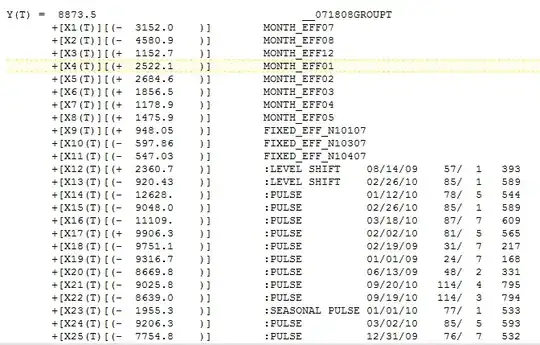I am new to time series and forecasting and I have been assigned to determine the model and order for a data object.
The ACF, PACF, and EACF are below:

I was thinking it was an AR(1), but I am not sure. Thanks for any help!
I am new to time series and forecasting and I have been assigned to determine the model and order for a data object.
The ACF, PACF, and EACF are below:

I was thinking it was an AR(1), but I am not sure. Thanks for any help!
By the rough rules of thumb in section 8.5 of Forecasting: Principles and Practice (2nd ed.) by Athanasopoulos & Hyndman, this indeed looks like an AR(1) process:
The data may follow an ARIMA(p,d,0) model if the ACF and PACF plots of the differenced data show the following patterns:
- the ACF is exponentially decaying or sinusoidal;
- there is a significant spike at lag p in the PACF, but none beyond lag p.
Try fitting an AR(1) and checking residuals, again using (P)ACF plots.
Alternatively, consider using an automatic ARIMA fitting tool, like auto.arima() in the forecast package for R.